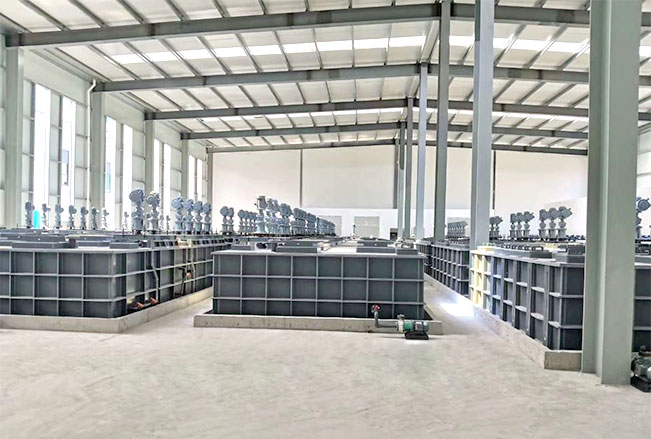Poor phase disengagement in a mixer-settler can lead to several operational and process-related issues. Here are some potential problems that can arise:
1. Reduced Separation Efficiency
Incomplete Separation: Poor phase disengagement can result in incomplete separation of the two immiscible liquid phases, leading to contamination of the extracted product with the unwanted phase.
Reduced Purity: The purity of the separated components may decrease, impacting the quality of the final product and potentially requiring additional purification steps.
2. Increased Entrainment
Carryover of Phases: Entrainment of droplets from one phase into another can occur, leading to the undesired mixing of phases and reducing the efficiency of the separation process.
Emulsion Formation: Persistent entrainment can result in the formation of stable emulsions, which are difficult to break and can severely hinder phase separation.
3. Higher Operational Costs
Increased Solvent Consumption: Poor separation may necessitate the use of more solvent to achieve the desired extraction, increasing operational costs.
Additional Processing Steps: Additional stages or equipment might be required to achieve the necessary separation, leading to higher capital and operating expenses.
4. Process Instability
Fluctuations in Flow Rates: Poor disengagement can cause variations in flow rates of the separated phases, leading to process instability and potentially disrupting downstream operations.
Unsteady State Operations: The system may operate under non-ideal conditions, causing fluctuations in process parameters and affecting overall system performance.
5. Equipment Fouling and Maintenance Issues
Deposition of Solids: Incomplete phase separation can lead to the accumulation of solid particles at the phase interface, resulting in fouling of the equipment and requiring frequent cleaning.
Increased Wear and Tear: The presence of mixed phases can cause uneven wear on equipment surfaces, leading to increased maintenance requirements and reduced equipment lifespan.

6. Lower Throughput
Flow Restrictions: Poor phase disengagement can restrict the flow of liquids through the mixer-settler, reducing the throughput and efficiency of the extraction process.
Bottlenecks: Accumulation of phases in the settler can create bottlenecks, limiting the overall capacity of the system and affecting productivity.
7. Safety and Environmental Concerns
Spill Risks: Improper separation can lead to the risk of spills or leaks, particularly if the phases have significantly different densities and the equipment is not designed to handle them.
Environmental Contamination: Incomplete separation can result in the discharge of contaminated effluents, leading to potential environmental issues and regulatory non-compliance.
8. Impact on Downstream Processes
Interference with Other Equipment: Poorly separated phases can interfere with the operation of downstream equipment, such as pumps, filters, or reactors, causing operational inefficiencies and potential damage.
Quality Control Issues: Contaminated phases can lead to quality control issues in downstream processes, affecting the final product and potentially resulting in the need for reprocessing.
9. Challenges in Process Control
Difficulty in Monitoring: Poor phase separation can make it difficult to monitor and control the process accurately, leading to challenges in maintaining optimal operating conditions.
Control Loop Instabilities: Fluctuations in phase separation can affect control loop stability, making it harder to achieve consistent process performance.
Addressing these issues requires careful design and operation of the mixer-settler, including optimizing the mixing and settling conditions, using appropriate materials and equipment, and implementing effective monitoring and control systems.